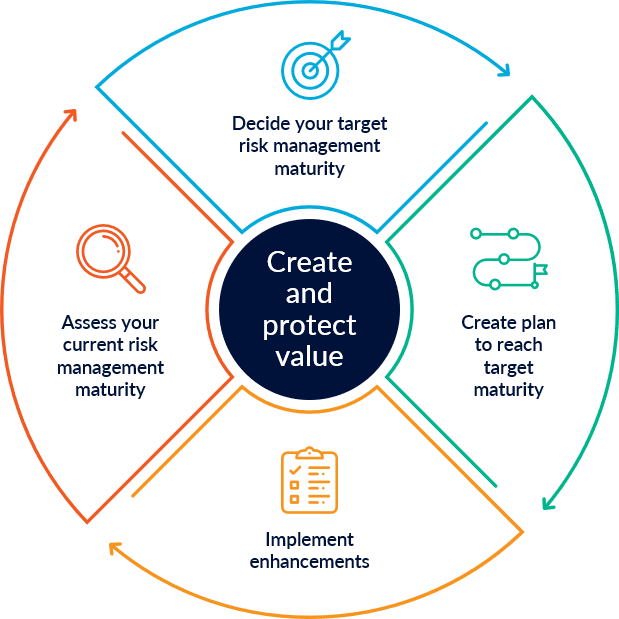The Victorian Government Risk Management Framework (VGRMF)(opens in a new window) requires your organisation to demonstrate a positive risk culture.
By risk culture, we mean the attitudes, beliefs and behaviours specifically relating to risk.
Those attitudes, beliefs and behaviours shape how people make decisions in situations of uncertainty, how they satisfy their appetite for risk, and how they collaborate on shared risk.
In a positive risk culture, people use risk management frameworks and processes effectively to create and protect value.
They also approach uncertainty confidently with the skills to turn it to the organisation’s advantage. They communicate effectively about risk and look for opportunities to collaborate on managing it.
They also take long-term benefits into consideration and think about how the consequences of an event can cascade through a system.
The Risk Culture Guide talks about what a positive risk culture is, how you can spot the signs of a poor risk culture and how to build a positive one. It also includes a Risk Culture Health Check Tool.
In this topic, we’ll look at
- Why’s risk culture so important?
- The work of cultural change
- How you can use some of our other materials to help you create an organisational culture that takes a positive attitude to risk.
Why’s risk culture so important?
A positive risk culture motivates people to use the organisation’s frameworks and processes.
It prompts them to actively reduce uncertainty by seeking out more information and communicating cooperatively with others.
It’s what makes it possible for people to respond intelligently and effectively to novel situations and—related to that—make decisions when the frameworks and processes don’t specify what to do. It makes an organisation resilient.
A positive risk culture is also a way to reduce uncertainty in the internal and external context. Knowing that you can rely on your colleagues, leaders and partners is what carries teams through situations of high uncertainty, whether that’s an emergency or the intense research and development that leads to something new.
And finally, our organisations exist to create and protect value for the people, places and systems in our care. The kind of culture your organisation has determines to some extent what you value, so a positive risk culture is crucial in this respect too.
The work of cultural change
Risk culture emerges from the day-to-day decisions and efforts of people across the organisation, from the leadership to those on the frontline. In that sense, creating a positive risk culture is everyone’s responsibility.
A positive risk culture, though, is something that must be worked towards in a conscious, systematic and goal-directed way. This involves a strategy and a plan, as outlined in the Risk Culture Guide, but also leadership, governance, change management and a system for monitoring change.
This will involve several parties. In this case, the responsible body, executive team and the business units tasked with the organisation’s culture, and with risk champions and decision-makers across the organisation.
It should also be a formal piece of work carried out in the workshops and meetings of the responsible body and executive committees that have been specifically designed for the task. It should also be part of the organisation’s planning and reporting cycle.
If you’re the enterprise risk lead, we also encourage you to make the most of our online self-assessment tool Risk Maturity Benchmark (RMB) to set goals and monitor change.
Review these examples.
Using our guides to help change the risk culture
We’ve tried to talk about risk in a different way with these guides and we encourage you to adopt the language and outlook in them.
Our guides can help you and others in the organisation to
- understand what a risk is
- take a positive attitude to uncertainty
- describe risk in specific and concrete language so that you know what you’re managing
- make sure all decisions involve an assessment of risk
- state precisely how much and what type of risk you’re willing to take and create
- get buy-in and cooperation on shared risk
- embed risk management concepts and practices into strategy and planning
- develop processes and frameworks that meet your organisation’s specific needs
- understand what it means to create and protect value
- attest confidently.
Continuous improvement
As the example from Sustainability Victoria shows, to sustain change in the long term you need to approach it systematically.
Use the Risk Maturity Benchmark to decide your target and plan how your organisation will develop a more positive risk culture. Once you’ve implemented your plan, you can see where your organisation is at and look at how you can improve again.
Updated

